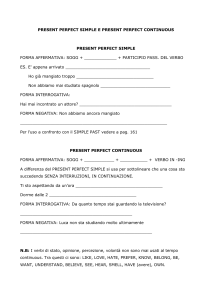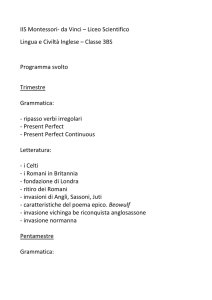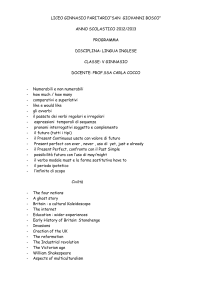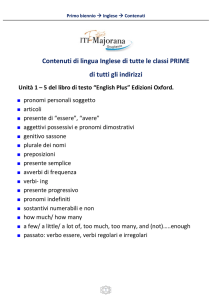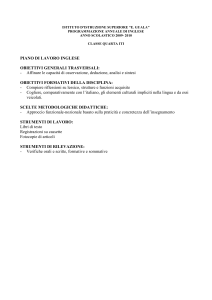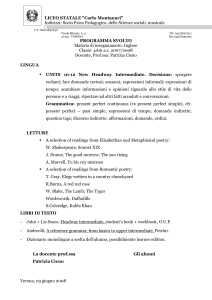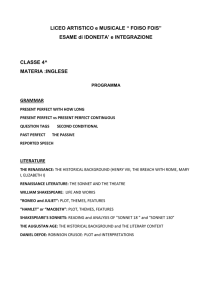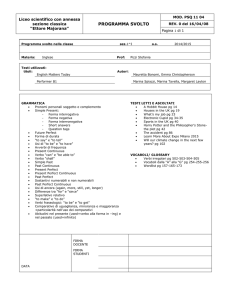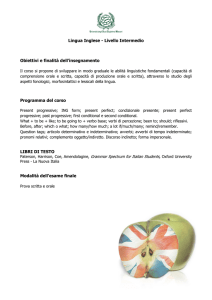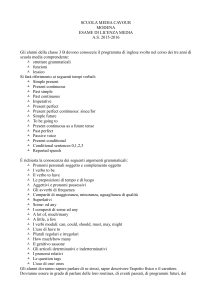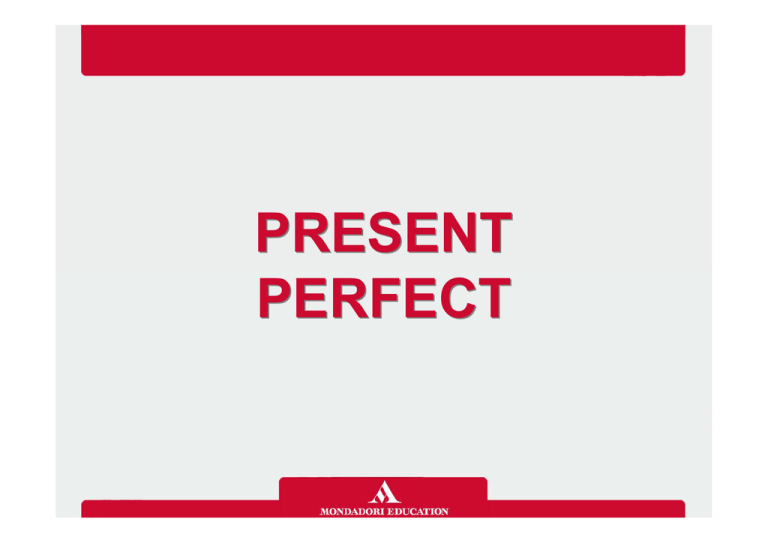
PRESENT
PERFECT
Definizione
Il Present perfect si usa per descrivere avvenimenti o
situazioni che si sono svolte nel passato, ma che hanno
ancora qualche tipo di rapporto con il presente.
Mette quindi in relazione il passato con il presente:
Present perfect
_________---------------------------I______
past
now
Come si forma
HAVE/HAS + PARTICIPIO PASSATO
DEL VERBO
AFFERMATIVA
I have travelled a lot.
INTERROGATIVA
Have you travelled a lot?
NEGATIVA
I haven’t travelled a lot.
I have never travelled.
INTERROGATIVA-NEGATIVA
Haven’t you travelled much?
Quando si usa -1
Per azioni avvenute in un tempo non concluso:
I have received many
e-mails regarding the interview
today.
⇩
È ancora lo
stesso giorno.
Quando si usa -2
Per parlare di esperienze nel passato senza
riferimento a un tempo preciso:
I’ve worked in a shop before.
⇩
Non è specificato quando!
Quando si usa -3
Per azioni avvenute nel passato che hanno
conseguenze nel presente o sono ancora in
corso:
They have moved to New York.
⇩
Conseguenza sul presente: ora sono a New York.
Quando si usa -4
Con il verbo go si può usare il participio been o
gone con diversi significati:
She has been to India.
⇩
Andata e tornata.
She has gone to India.
⇩
È andata ed è ancora lì.
Quando si usa -5
Il Present perfect può essere accompagnato da
alcuni avverbi di tempo che definiscono la
collocazione di un evento rispetto al presente:
just
already
yet
so far
still
I’ve just finished all my homework!
I have already finished my homework!
Has she finished her homework yet?
She has done half of her homework so far.
She still hasn’t finished her homework!
Present perfect con for e since
Duration forms
Il Present perfect si usa per descrivere la continuità di azioni
indicando il punto di inizio (con since) o una specifica durata
(con for), oppure per rispondere a domande poste con How
long…….?
N.B. Spesso in italiano si usa il presente.
PRESENT PERFECT + FOR o SINCE
For → indica la durata di tempo:
They have been friends for ten years.
Since → indica il punto preciso di inizio:
They have been friends since they were one year old.
Altri usi
Il Present perfect si usa anche:
• con i superlativi relativi + ever, in years, in my
life, per dare enfasi alla frase.
It’s the most beautiful sunset we’ve ever seen!
Per esercitarsi
Inserisci il Present perfect dei verbi tra parentesi alla
forma affermativa, interrogativa o negativa.
He……......just…………..to lunch, so he’s very full. (go)
How long……………..…...your best friend? (you know)
I……………………………Pinocchio. (never read)
She………………………in Bristol for 5 years. (live)
My mother…………………….much. (not travel)
How many times…………………….that film? (she see)
They……………………….painting the house. (already finish)
I…………………..three e-mails………… .(write so far)


